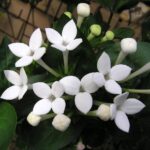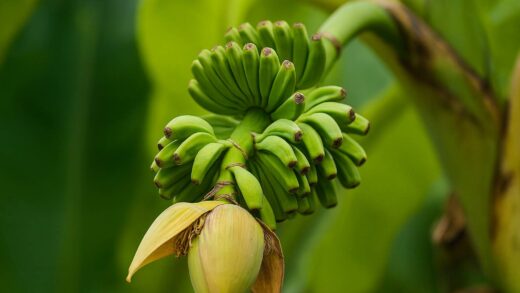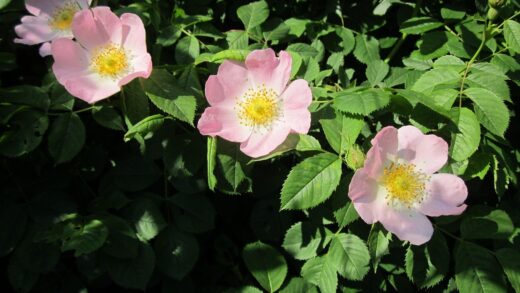Pruning a Japanese maple is an act that requires a delicate touch and a clear vision; it is more akin to sculpture than to simple maintenance. These trees have a naturally graceful and elegant structure, and the goal of pruning is to enhance this inherent beauty, not to force the tree into an unnatural shape. The wrong cut at the wrong time can spoil its form for years, while a thoughtful and conservative approach can improve its health, reveal its intricate branching, and accentuate its artistic character. Understanding the principles of when, what, and how to prune is essential for any gardener who wishes to be a true caretaker of this living work of art.
The philosophy and goals of pruning
The primary philosophy behind pruning a Japanese maple is “less is more.” Unlike many other shrubs and trees that require heavy annual pruning to control their size or encourage flowering, Japanese maples generally look their best when allowed to develop their natural form with minimal intervention. The goal is not to shear it into a perfect geometric shape, but to work with the tree’s individual character. Pruning should be a subtle process of refinement, aimed at maintaining the health of the tree and highlighting its most attractive features, such as its delicate branching structure or weeping habit.
One of the main goals of pruning is to improve the tree’s health. This involves the removal of any wood that is dead, damaged, or diseased. Dead branches serve no purpose and can become entry points for pests and diseases. Damaged or broken branches should be pruned back to a healthy point to allow the tree to heal cleanly. Removing these parts not only improves the tree’s appearance but also directs its energy towards healthy growth rather than trying to support or compartmentalize failing limbs. This type of “cleaning” is the most basic and essential form of pruning.
Another key objective is to improve the structure and air circulation of the tree. This involves removing branches that are crossing or rubbing against each other, as this can create wounds in the bark. You should also aim to thin out areas where the branches are overly crowded. Selectively removing a few branches from a dense area opens up the canopy, allowing more light and air to penetrate the interior of the tree. This improved air circulation is vital for reducing the risk of fungal diseases, which thrive in moist, stagnant conditions. This thinning process also has the aesthetic benefit of revealing the beautiful, layered structure of the interior branches.
Finally, pruning can be used for aesthetic refinement, to gently guide the shape of the tree and enhance its visual appeal. This might involve removing a awkwardly placed branch that detracts from the overall silhouette, or shortening a branch that is growing too far out of proportion with the rest of the tree. For weeping varieties, it might mean selectively thinning some of the cascading branches to prevent them from becoming a dense, heavy curtain and instead create a more delicate, lace-like effect. This type of pruning requires a careful eye and should always be done with restraint.
More articles on this topic
The best time to prune
The timing of your pruning cuts is one of the most critical factors for the health of your Japanese maple. The absolute best time to perform any major structural pruning is during the dormant season, from late autumn after the leaves have fallen until late winter before the sap begins to run. Pruning during dormancy offers several advantages. Without the leaves, the entire branching structure of the tree is clearly visible, making it much easier to see what you are doing and to make thoughtful decisions about which branches to remove.
Pruning a dormant tree is also less stressful for the plant. Since its metabolic processes are slowed, the tree loses less energy and sap from the cuts. The cuts will have time to begin the healing process before the tree pushes out its flush of new growth in the spring. Furthermore, because the tree is not actively growing, there is less risk of stimulating a lot of unwanted new shoots around the pruning cuts. For these reasons, winter is the ideal window for any significant thinning or shaping of your maple.
While winter is best for structural work, very light pruning can be done in the summer. This might include snipping off a small, wayward shoot or removing a tiny twig that is out of place. This is often referred to as “pinching” or “finger pruning” when dealing with very new, soft growth. However, you should avoid making any large cuts during the summer. Pruning in the summer, especially major pruning, can stress the tree during the hottest part of the year and can stimulate a late flush of growth that will not have time to harden off before winter.
The one time you should absolutely avoid pruning a Japanese maple is in the early spring, just as the buds are swelling and the sap is beginning to rise. Making cuts during this period will cause the tree to “bleed” a large amount of sap. While this is not usually fatal, it is unsightly and represents a significant loss of energy for the tree at a time when it needs all its resources to produce new leaves. Wait until the leaves have fully hardened off in the summer for any minor touch-ups, or better yet, wait until the following winter for any structural work.
More articles on this topic
What to remove: the key cuts
The first and most obvious candidates for removal are what are often called the “Three D’s”: dead, damaged, and diseased wood. Inspect your tree carefully and identify any branches that are brittle, have no live buds, show signs of disease like cankers, or are clearly broken. These should be removed at any time of year you find them, as they pose a health risk to the tree. Cut these branches back to a point where they join a larger, healthy branch, or all the way back to the main trunk if necessary.
Next, look for any branches that are crossing, rubbing, or growing back towards the center of the tree. Branches that rub against each other will eventually create wounds in the bark, providing an entry point for insects and disease. Pruning one of these branches will solve the problem and improve the long-term health of the tree. Similarly, branches that grow inward disrupt the natural outward flow of the canopy and contribute to crowding and poor air circulation. Removing these helps to open up the structure of the tree.
After you have cleaned up the interior, step back and look at the overall form of the tree. Identify any branches that are growing parallel to each other and very close together, competing for the same space and light. In most cases, it is best to remove one of them, usually the weaker or less well-placed of the two. You should also look for suckers, which are vigorous, upright shoots that grow from the base of the tree or from the rootstock on grafted varieties. These should always be removed as they sap energy from the desired part of the tree.
Finally, consider the vertical spacing of the branches. On upright Japanese maples, the ideal is to have a well-spaced, layered structure. If you have two branches emerging from the trunk at the exact same point, forming a weak “V” crotch, it is often wise to remove one of them to create a stronger structure. The goal is to create a pleasing, open, and balanced form that allows light and air to move through the tree and showcases its natural elegance. Always remember to make fewer cuts rather than more; you can always take more off later, but you can never put a branch back on.
Proper pruning techniques
Using the right tools is the first step to making clean, proper pruning cuts. For small twigs and branches up to about a centimeter in diameter, a sharp pair of bypass pruners is the ideal tool. For branches larger than this, up to about 4-5 centimeters, a pair of loppers or a pruning saw should be used. Using a tool that is too small will crush the wood and create a ragged wound that is slow to heal. Whatever tool you use, it is absolutely essential that it is clean and sharp. Sterilize your tools with rubbing alcohol or a bleach solution between cuts, especially if you are removing diseased wood, to prevent spreading pathogens.
When you are removing a small branch, make your cut about half a centimeter above an outward-facing bud. The new growth from this bud will then grow outwards, away from the center of the tree, continuing the natural open form. When you are removing a larger branch back to the main trunk or a larger limb, it is crucial to make the cut just outside the “branch collar.” The branch collar is the slightly swollen area of tissue where the branch joins the trunk. This collar contains specialized cells that will grow over and seal the wound. Do not make a flush cut against the trunk, and do not leave a long, ugly stub.
For removing branches that are too large to support with one hand, use the three-cut method to prevent the weight of the branch from tearing the bark down the side of the trunk. The first cut is an undercut, made on the underside of the branch about 15-20 centimeters away from the trunk, cutting about a third of the way through. The second cut is made from the top, a few centimeters further out from the first cut. This will cause the branch to break away cleanly between the two cuts. The final cut is to remove the remaining stub, cutting just outside the branch collar as described before.
After you have finished pruning, there is no need to apply any kind of pruning paint or wound sealer. Research has shown that these products can actually inhibit the tree’s natural healing process by trapping moisture and creating a favorable environment for decay fungi. A clean cut made in the proper location is all the tree needs to compartmentalize and heal the wound itself. The most important thing is to step back frequently as you prune, look at the tree from all angles, and make deliberate, thoughtful decisions before each cut.


















